AMD Reveals Threadripper 2 : Up to 32 Cores, 250W, X399 Refresh
by Ian Cutress on June 5, 2018 11:05 PM EST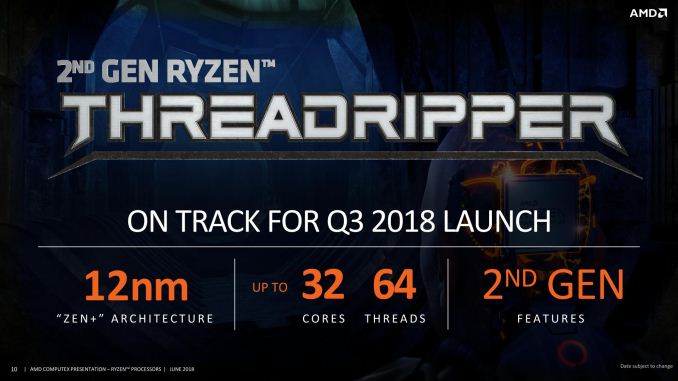
One of the surprises from AMD’s first year of the newest x86 Zen architecture was the launch of the Threadripper platform. Despite the mainstream Ryzen processors already taking a devastating stab into the high-end desktop market, AMD’s Threadripper offered more cores at a workstation-friendly price. For 2018, the next generation is going to be using AMD’s updated 12nm Zeppelin dies, as well as including a few new tweaks into the system including better boost and faster caches.
This article is still a work in progress, and will be updated as more news comes in.
AMD’s Zeppelin silicon has 8 cores, and the first generation Threadripper uses two of them to get to the top-SKU of 16-cores. Inside the CPU however, there are four pieces of silicon: two active and two inactive. For this second generation of Threadripper, called Threadripper 2 or the Threadripper 2000-series, AMD is going to make these inactive dies into active ones, and substantially increase the core count for the high-end desktop and workstation user.
At the AMD press event at Computex, it was revealed that these new processors would have up to 32 cores in total, mirroring the 32-core versions of EPYC. On EPYC, those processors have four active dies, with eight active cores on each die (four for each CCX). On EPYC however, there are eight memory channels, and AMD’s X399 platform only has support for four channels. For the first generation this meant that each of the two active die would have two memory channels attached – in the second generation Threadripper this is still the case: the two now ‘active’ parts of the chip do not have direct memory access.
This technically adds latency to the platform, however AMD is of the impression that for all but the most memory bound tasks, this should not be an issue (usually it is suggested to just go buy an EPYC for those workloads). While it does put more pressure on the internal Infinity Fabric, AMD ultimately designed Infinity Fabric for scalable scenarios like this between different silicon with different levels of cache and memory access.
Update: AMD has just published a full copy of their slide deck for the Threadripper 2 presentation. In it are a few interesting factoids.
| AMD Threadripper CPUs | |||||
| Threadripper 2 32-Core Sample |
Threadripper 2 24-Core Sample |
Threadripper 1950X |
Threadripper 1920X |
||
| Socket | TR4 (LGA) 4094-pin |
||||
| CPU Architecture | Zen+ | Zen+ | Zen | Zen | |
| Cores/Threads | 32 / 64 | 24 / 48 | 16 / 32 | 12 / 24 | |
| Base Frequency | 3.0 GHz | 3.0 GHz | 3.4 GHz | 3.5 GHz | |
| Turbo Frequency | 3.4 GHz (WIP) | 3.4 GHz (WIP) | 4.0 GHz | 4.0 GHz | |
| L3 Cache | 64 MB ? | 48 MB ? | 32 MB | 32 MB | |
| TDP | 250W | 250W | 180W | 180W | |
| PCIe 3.0 Lanes | 60 + 4 | ||||
| Chipset Support | X399 | ||||
| Memory Channels | 4 | ||||
- Both the 24-core and 32-core sample CPUs are clocked at 3.0GHz base and 3.4GHz all-core turbo, with the latter being a work-in-progress according to the company.
- The 32-core system was equipped with DDR4-3200 memory. This is notable because the Ryzen processors based on the same 12nm Zeppelin dies officially max out at DDR4-2933.
- The codename for the processor family is listed as "Colfax". This is the first we've heard this codename from AMD.
- Despite the high TDP, both CPUs used in AMD's demos were air-cooled, using AMD's Wraith Ripper Air Cooler
Also announced at the presentation is the state of play of motherboards. According to the motherboard vendors These new Threadripper 2000-series processors will have a peak TDP rating of 250W, which is much higher than 180W we saw on the 1950X. We have been told by partners that the 250W rating is actually conservative, and users should expect lower power consumption in most scenarios. Nonetheless, it was stated by several motherboard vendors that some of the current X399 motherboards on the market might struggle with power delivery to the new parts, and so we are likely to see a motherboard refresh. That is not saying that the current X399 offerings will not work, however they might not offer overclocking to the level that users might expect. At Computex there are new X399 refresh motherboards being demonstrated by a few companies, and we will report on them in due course. Other specifications are expected to match the previous generation, such as PCIe lane counts, despite the newly active dies.
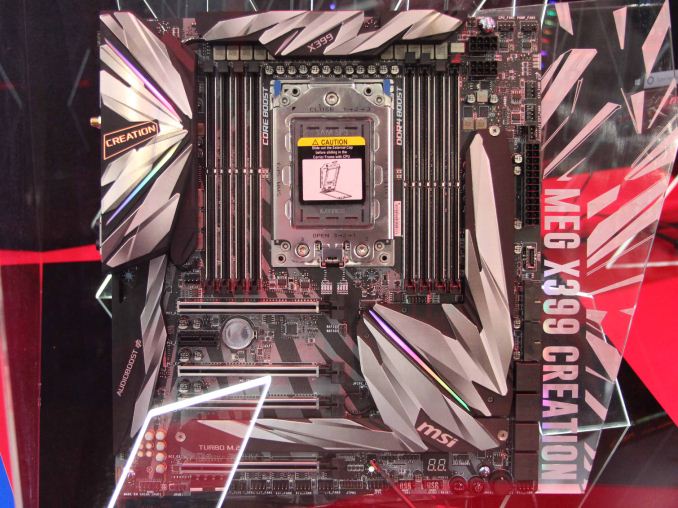
MSI's 19-phase X399 Refresh Motherboard
The launch for these new processors, according to our moles is in early August. This aligns with what AMD stated at the beginning of the year at CES, and is almost a year from the original Threadripper launch.
Pricing on the processors is set to be revealed either today or closer to the launch time. We will update this piece as more information comes in.
It will be interesting if AMD is going to go through the ‘unboxing’ embargo this time around, or just jump straight to full performance reviews. As always, come to AnandTech for the full story.
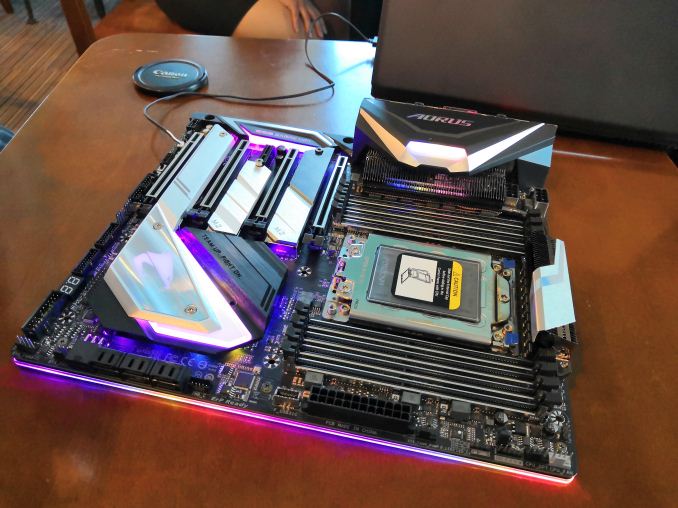
GIGABYTE's new X399 Refresh Motherboard
| Want to keep up to date with all of our Computex 2018 Coverage? | ||||||
 Laptops |
 Hardware |
 Chips |
||||
| Follow AnandTech's breaking news here! | ||||||


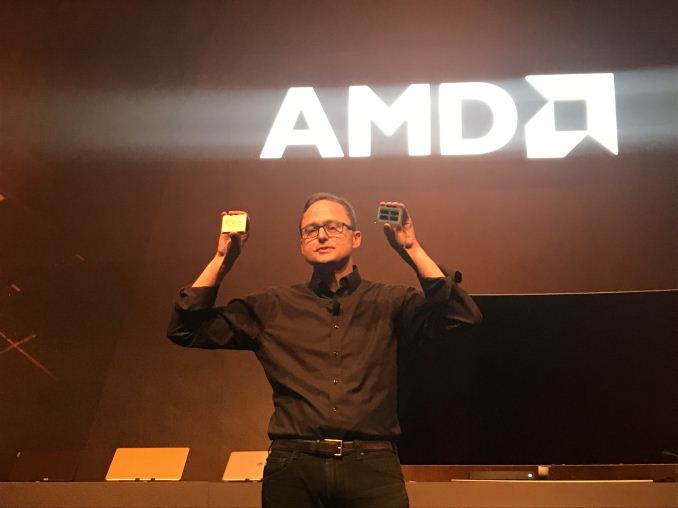
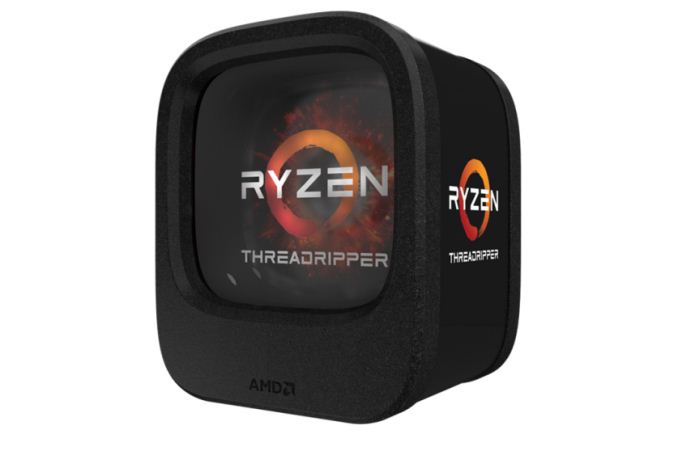
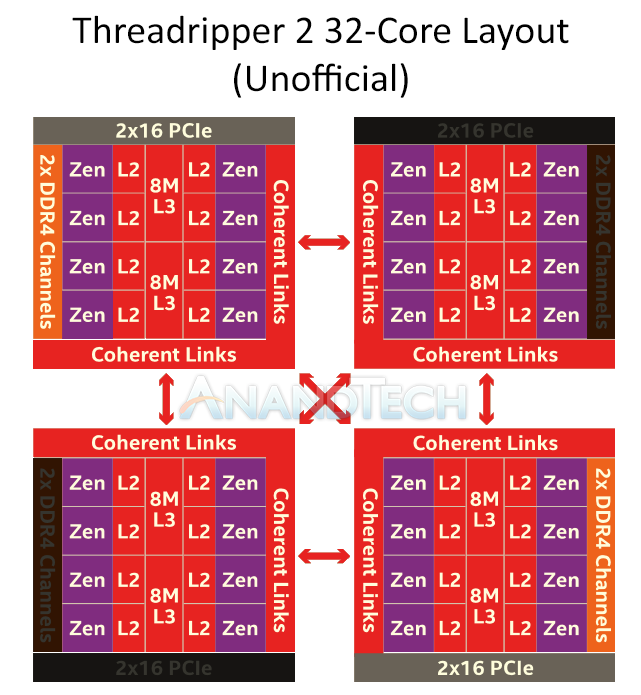
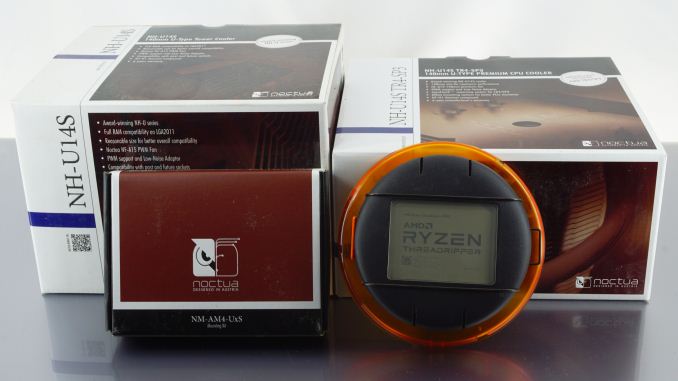














203 Comments
View All Comments
SaturnusDK - Wednesday, June 6, 2018 - link
Me too. I can finally retire my ageing dual socket Xeon. Probably going for the 24C as I don't expect to be using more for several years ahead and it'll probably be priced better per core than the 32C one. Not to mention that clocks might be pushed a bit higher on the 24C with a good air cooler.0ldman79 - Wednesday, June 6, 2018 - link
My thoughts exactly. Six cores per CCX should be a little easier to power, cool and overclock, same as the FX series.Not saying I wouldn't switch for an eight core if I tripped over one cheap, but my six core is clocked high enough that I really wouldn't see much benefit going to an eight core. Likely my VRM would limit the 8 core faster and at best I'd have the same performance in most situations.
Da W - Wednesday, June 6, 2018 - link
AMD is competing to give consumer more for their money.Intel doesn't want to give consumer a bang for their buck and tries to bring back the gigahertz race of 2000s.
Intel fanboyz are happy.
zodiacfml - Wednesday, June 6, 2018 - link
Now I'm impressed with the scene Intel and AMD is making. This is a brawl. I knew that Intel aren't putting out their best on their CPUs considering their poor thermal pastes and good performance once replaced or dellided CPUs. But, I haven't expected them to bring out the best of the CPUs this soon. I thought, we will not see them at all once their 10nm products arrives.I have to wonder, if AMD can do this at 14nm in just a short time since the first Ryzen, then Intel has been sitting on this capability for years!
Anyway, AMD is doing fine with the their CPU business now. Nvidia is now showing an Intel like move, delaying their next gen products with no definite date. Does it mean AMD isn't releasing anything new?
Pork@III - Wednesday, June 6, 2018 - link
Can Crisis Play With This Processor? :D0ldman79 - Wednesday, June 6, 2018 - link
lolHonestly, probably not.
I catch hell getting Crysis to work on modern CPU and OS these days. Crysis Warhead, based on the *exact same executable* works, Crysis freaks out.
Run 64bit to get it working on an FX in 7 64bit, but I still haven't been able to get the original working on my Skylake laptop. I've gotten so far as the cutscenes finally, then it crashes. EA will never release a patch for it, but they'll probably keep selling it on Origin.
Crytek was actually pretty good about patching games before the acquisition.
oleyska - Thursday, June 7, 2018 - link
My ryzen 1700 runs crysis perfectly fine.msroadkill612 - Thursday, June 21, 2018 - link
It will play havoc.Chickthief - Wednesday, June 6, 2018 - link
Does this mean 32 cores and 64 threads with 80 MEGABYTES OF CACHE AND 128 FREAKING PCI-E LANES?phoenix_rizzen - Wednesday, June 6, 2018 - link
64 PCIe lanes in Threadripper.If you want the full 128 PCIe lanes, you need to move to EPYC.